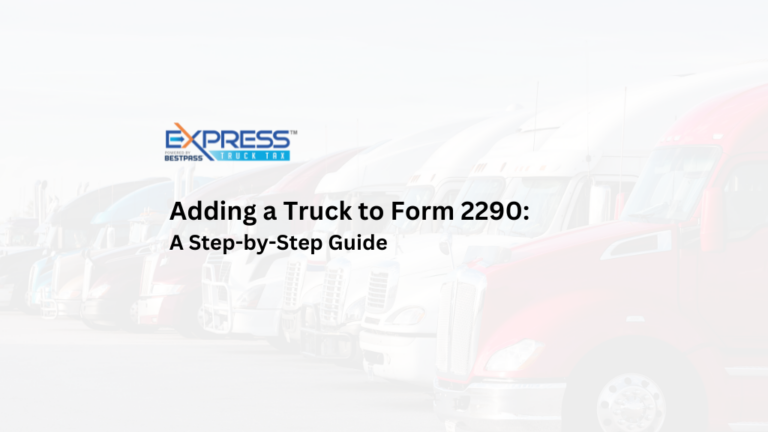Truck owners and companies must often add another truck to their Form 2290 filing. Whether you’ve expanded your fleet, acquired a new vehicle, or replaced an existing one, it’s essential to understand how to add a truck to your Form 2290 to ensure compliance with the Heavy Vehicle Use Tax (HVUT) regulations. In this blog post, we will guide you through the steps involved in adding another truck to your Form 2290.
1. Determine the Taxable Period for the New Truck
The FUM or first used month is determined by when you put the new truck on the road. The HVUT tax period typically runs from July 1st to June 30th of the following year. If the new truck is in use or placed on the road anytime during the tax period, you must file Form 2290 for that period.
2. Gather Required Information
Collect all the necessary information for the new truck, including its Vehicle Identification Number (VIN), taxable gross weight, and the date it was first used on public highways. This information is crucial for accurately completing Form 2290 and calculating the applicable tax amount.
3. Create or Login To Your Account with ExpressTruckTax.com
You must start a new Form 2290 and provide the required information for the new vehicle. Ensure that all information is accurate and current to avoid potential errors or delays in the filing process.
4. Calculate and Pay the Tax
ExpressTruckTax will automatically calculate the tax due using the taxable gross weight and the first used month of the new truck. Verify and choose the IRS payment method that makes the most sense for your business.
5. Obtain Stamped Schedule 1
After the IRS processes your Form 2290 and payment, you will receive a copy of your stamped Schedule 1 as proof of tax filing for this new vehicle.
By following these steps, you can successfully add another truck to your Form 2290 and ensure compliance with HVUT regulations. Remember to keep copies of your filed Form 2290, stamped Schedule 1, and any relevant documentation for your records.

Disclaimer: The information provided in this blog post is for general informational purposes only and should not be considered as legal, tax, or financial advice. For specific guidance related to your individual situation, it is recommended to consult with a professional tax advisor or the IRS directly.

